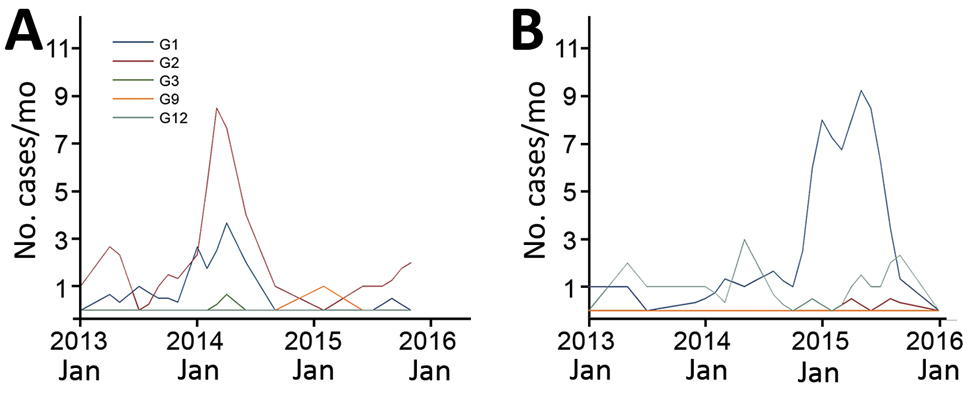Volume 25, Number 9—September 2019
Dispatch
Vaccine Effectiveness against DS-1–Like Rotavirus Strains in Infants with Acute Gastroenteritis, Malawi, 2013–2015
Figure

Figure. Monthly number of rotavirus cases at Queen Elisabeth Central Hospital, Blantyre, Malawi. Numbers are based on the presence of either DS-1–like (A) or Wa-like (B) constellation of rotavirus strains.
1These authors contributed equally to this article.
Page created: August 21, 2019
Page updated: August 21, 2019
Page reviewed: August 21, 2019
The conclusions, findings, and opinions expressed by authors contributing to this journal do not necessarily reflect the official position of the U.S. Department of Health and Human Services, the Public Health Service, the Centers for Disease Control and Prevention, or the authors' affiliated institutions. Use of trade names is for identification only and does not imply endorsement by any of the groups named above.